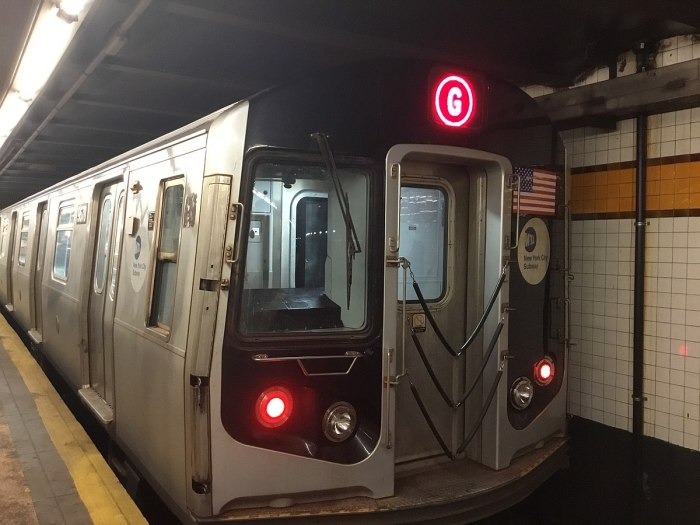
The Movement for Justice in El Barrio was started by women struggling to get landlords to make repairs in their apartments.
Josefina Salazar was one of them. She’d immigrated to 106th Street from Queretaro, Mexico to escape grinding poverty with her children, but in NYC she still struggled — in particular, with poor conditions in her apartment.
The burner on her stove was faulty and sometimes emitted gas. Salazar, 40, was afraid it was a health hazard, particularly with children in the house, yet the landlord was unresponsive. She says the city was slow to respond, too. Issues like that prompted Salazar and more than a dozen other women to begin gathering in lobbies of nearby buildings, discussing how to organize to get the landlord and city’s attention.
That was in 2004. Since then, the group has stayed active, leading media tours of apartments in dire need of repairs that they say sometimes led city workers to quickly solve problems. Now the group is gearing up for a larger fight over a proposed rezoning in the neighborhood, which the women fear will result in their being displaced, despite city promises to the contrary.
The point of the potential rezone is to allow developers to build higher; with Mayor Bill de Blasio’s rezoning initiatives, some of that housing is required to be affordable, helping to make a dent in the city’s affordability crisis.
But some groups in East Harlem and elsewhere worry that the rezonings only increase the pace of gentrification. Despite boosted tenant protections from the city, they envision eventual displacement.
It would work like this, according to the groups: a block that’s home to a four-story brownstone might be upzoned to allow for 15-story buildings. Landlords stand to make lots of money, but first they’d need to get rid of current tenants in the smaller building. That provides a monetary incentive for landlords to “encourage” tenants out the door.
Some of the new apartments will, indeed, be affordable, but how many? Even deeply subsidized rents might be higher than what exists in the neighborhood today. Besides, there’s no guarantee that locals will get the affordable housing, which people from all over the city need.
And, Salazar says, the market-rate apartments will be rented by higher-income individuals, who will drive up the prices for goods locally and “drive us out more than ever.” She’s concerned that businesses like Mi Mexico Lindo, a local bakery, or Guadalupana, a deli, would be replaced by larger or more expensive commercial establishments.
For these reasons she and her organization are against the rezoning entirely, and propose instead a 10-point plan strengthening the city’s ability to fight tenant harassment.
Protecting tenants’ rights, they say, would preserve more units than construction would gain and displace.
Preventive plans like that don’t add sorely needed housing stock, but it’s difficult to predict the external fallout even from controlled rezones. And no one can be sure of the commitment of future mayors to even try for truly affordable levels.
This uncertainty has led to opposition over a number of recent rezoning proposals. Some smaller rezones have even been halted in other neighborhoods. Cognizant of that possibility, City Council Speaker Melissa Mark-Viverito worked with community groups and her constituents in the area to come up with a plan to shape the rezone before it happened. (Click here to read a recent amExpress following Mark-Viverito around the district as she makes her case).
That resulted in the East Harlem Neighborhood Plan, which largely focused on community investment to accompany development. Some residents, like Andrew Padilla, a vocal critic of gentrifying development, say that the plan was well-intentioned but played down the possibility of preventing rezoning at all.
“The question was never should we do this, but what we can get out of it,” he says.
The moment of truth is now almost upon the neighborhood. Earlier this month, the Department of City Planning presented rezoning specifics to the neighborhood community board.
That plan generally tracks Mark-Viverito’s Neighborhood Plan, but in some areas, it goes further — allowing towers in the 35-story range on sections of Third and Park Avenues, for example.
The Planning Commission will present again before the new year, with an eye to begin environmental reviews in the spring. Despite Mark-Viverito’s outreach, opposition from some fronts will likely continue — including from Movement for Justice, whose representatives say they have been pressing their tenant-focused pitch unsuccessfully on elected officials.
Padilla says it’s a shame that significant development may be allowed in exchange for “goodies or sweetening the pot” with things like park and schools investments. Those are things “we rightfully deserve because we’re taxpayers,” development or no development.
Correction: An earlier version of this article incorrectly identified the agency that presented rezoning details to East Harlem’s community board. It was the Department of City Planning, not the City Planning Commission.































